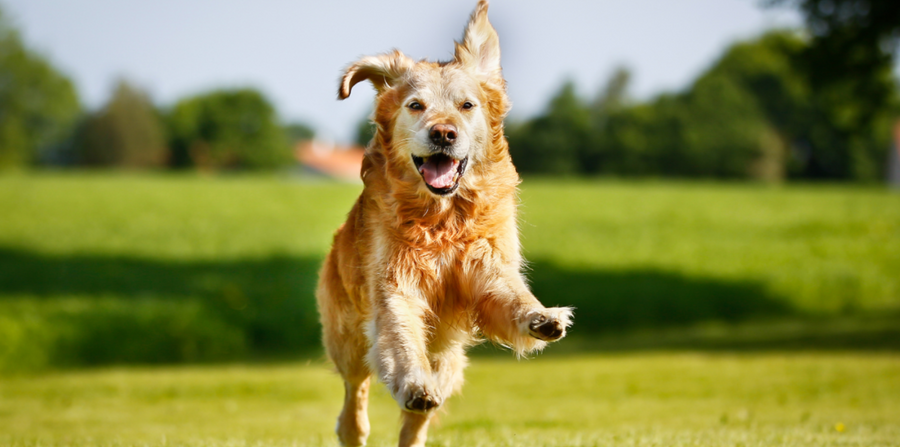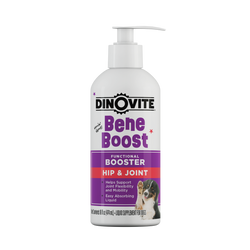Your Guide to Dog Hip and Joint Care

Understanding Canine Hip and Joint Health
Did you know that 1 in 5 dogs show signs of arthritis before the age of one? Dogs are naturally active creatures, and their joints endure wear and tear over time. Understanding the importance of hip and joint care for dogs and implementing preventative measures can significantly enhance their quality of life and mobility.
The hips and joints play a crucial role in a dog's ability to move freely. Unfortunately, various factors, including genetics, age, breed predisposition, and lifestyle, can contribute to hip and joint issues. Common conditions affecting canine hips and joints include:
- Hip Dysplasia – A genetic condition where the hip joint doesn't fit properly, leading to pain and mobility issues.
- Osteoarthritis – A degenerative joint disease that worsens over time, causing stiffness and discomfort.
- Ligament Injuries – Tears in crucial ligaments, such as the cranial cruciate ligament (CCL), can significantly impact movement.
-
Degenerative Joint Disease – The gradual deterioration of joint cartilage, leading to pain and inflammation.
Signs of Hip and Joint Problems in Dogs
Early detection of hip and joint issues can help slow progression and improve quality of life. Watch for these common signs:
- Limping or favoring one leg
- Stiffness, especially after rest or exercise
- Reluctance to climb stairs or jump
- Difficulty rising from a lying position
- Noticeable decrease in activity level
- Vocalizing or showing signs of pain when touched
Strategies for Dog Hip and Joint Care
Taking proactive steps can help maintain your dog’s joint health and mobility:
- Maintain a Healthy Weight. Excess weight puts unnecessary strain on a dog's joints, exacerbating hip and joint issues. A balanced diet and regular exercise help keep your dog at an ideal weight.
- Regular Exercise. Low-impact exercises, such as swimming, walking, and gentle play, strengthen muscles, improve flexibility, and support joint health without placing excessive stress on the joints.
- Orthopedic Beds and Supportive Surfaces. Provide your dog with a comfortable orthopedic bed or supportive surface that cushions their joints while resting or sleeping.
- Physical Therapy and Rehabilitation. Physical therapy techniques, such as hydrotherapy, massage, and controlled exercises, can improve range of motion, alleviate pain, and strengthen muscles surrounding the hips and joints.
- Dog Hip and Joint Supplements. Adding a joint supplement to your dog’s diet supports joint function, reduces inflammation, and alleviates discomfort associated with hip and joint issues. Look for ingredients like glucosamine for dogs, chondroitin, and MSM for optimal joint support.
- Regular Veterinary Check-ups. Routine check-ups help monitor your dog's hip and joint health, allowing early intervention to slow the progression of degenerative joint conditions.
What Are the Best Joint Supplements for Dogs?
When selecting a dog joint supplement, consider these essential ingredients:
- Glucosamine for dogs – A key building block for cartilage, helping maintain healthy joints.
- Chondroitin – Works alongside glucosamine to support cartilage structure and prevent breakdown.
- MSM (Methylsulfonylmethane) – A natural sulfur compound with powerful anti-inflammatory properties.
- Omega-3 Fatty Acids – Found in fish oil, these help reduce joint inflammation.
-
Turmeric and Boswellia – Natural anti-inflammatory ingredients that support joint comfort.
Choosing the best joint supplement for dogs depends on your dog’s size, age, and specific needs. Hip and joint supplements for large dogs may contain higher doses of these key ingredients to support heavier body weight and increased joint stress.
How Can I Help My Dog’s Hips and Joints?
In addition to supplements, you can support your dog’s joint health by:
- Keeping them active with low-impact exercises.
- Feeding a balanced diet rich in joint-supporting nutrients.
- Providing a comfortable, orthopedic bed.
- Regularly massaging and stretching their muscles.
- Maintaining regular vet visits to monitor their mobility.
How Long Does It Take for Hip and Joint Supplements to Work in Dogs?
The effectiveness of dog hip and joint supplements varies depending on the dog and severity of the condition. Typically:
- Some improvement in mobility may be noticeable within 2-4 weeks.
- More significant changes occur after 6-8 weeks of consistent use.
-
Long-term benefits are best maintained with daily supplementation.
If your dog does not show improvement after a couple of months, consult your veterinarian for alternative treatment options.
Should Dogs Take Hip and Joint Supplements?
While not every dog requires a dog joint supplement, they are beneficial for:
- Senior dogs prone to arthritis and joint deterioration.
- Active and working dogs that put strain on their joints.
- Large breed dogs with a higher risk of hip and joint issues.
-
Dogs recovering from surgery or injuries affecting their mobility.
If your dog has hip or joint concerns, consult your vet about incorporating a dog food supplement tailored to their needs.
What Should I Look for in Hip and Joint Supplements for Dogs?
When choosing the best joint supplement for dogs, ensure it contains:
- High-quality glucosamine and chondroitin to support cartilage.
- MSM for natural anti-inflammatory benefits.
- Omega-3 fatty acids to reduce joint swelling.
- Additional antioxidants and vitamins for overall joint health.
Opt for supplements with veterinary backing and high bioavailability for better absorption.
At What Age Should I Give My Dog Hip and Joint Supplements?
Joint supplements aren’t just for senior dogs. Consider starting supplementation:
- For large breed dogs: As early as 12-18 months, since they are prone to early joint problems.
- For active or working dogs: Around 2-4 years old to support long-term joint health.
-
For any dog showing signs of joint discomfort: At the first signs of stiffness or reduced mobility.
Starting early can help prevent future joint issues rather than just treating them once they appear.
At What Age Is a Dog Considered a Senior?
A dog is typically considered a senior based on its breed and size:
- Small breeds (<20 lbs) – Around 10-12 years old
- Medium breeds (20-50 lbs) – Around 8-10 years old
- Large breeds (50-90 lbs) – Around 6-8 years old
-
Giant breeds (>90 lbs) – Around 5-7 years old
As dogs age, their joints naturally experience more wear and tear. Providing proper care, a balanced diet, and hip and joint supplements can help keep them mobile and comfortable in their golden years.
Final Thoughts
Taking care of your dog’s hips and joints is essential for their long-term health and well-being. By recognizing early signs of joint problems, implementing preventative strategies, and choosing the best joint supplement for dogs, you can help your furry companion maintain mobility and enjoy an active, pain-free life.
If you’re unsure about the best approach for your dog, consult your veterinarian for personalized recommendations on dog hip and joint supplements and care strategies.
*All information on this website is for educational purposes only and is not intended to replace the expert advice of a veterinarian or veterinary practitioner.
Related Products

%20(1).png)
